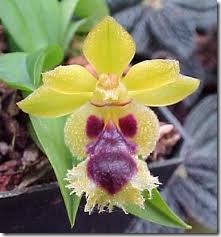Orchids are a unique and unusual family of plants, and one of the oldest and most diverse in the world. They are luscious, mysterious flowering plants with beautiful colors, shapes, sizes, and fragrances that make them an enchanting species to grow and collect.
Orchids grow all over the world in many different environments, and some have very particular growing requirements. Light, water, temperature, air movement, humidity, growing media, and re-potting method are subjects the grower needs to be familiar with to grow healthy orchid plants. The charm and allure of orchids attracts novice orchid enthusiast and expert alike.
Orchid Education
-
Find out what kind of orchid you have or are thinking of buying. Some of the rarer orchids require extensive knowledge of the plant’s source, environment, and growing habits for successful cultivation. The more common orchids do not require such specialized knowledge of their needs, although it will help to understand some things about orchids in general before growing them.
Look up the name of your orchid if the plant is labeled. If you don’t know the name, try to identify it by comparing it to photos of flowers in a plant encyclopedia or an online source. Many orchids sold by local retailers are hybrids, which are hardy and don’t require very specialized care. Some popular hybrids are Cattleya (corsage orchid), Phalaenopsis (moth orchid), Paphiopeilums (lady slippers), Cymbidium, Dendrobium, Vanda, and Oncidiums (dancing slippers).
Light
-
While there are more than 18,000 species of orchids from varying environments, most will do well in anything ranging from light shade to bright diffuse light—and will get sunburned if left in strong, direct sun. Many orchids are epiphytic, meaning they grow on other plants and trees, absorb their moisture from the air, and are shaded by leaves and branches. Leaves should be bright green, not dark green or yellow, and shouldn’t have any burned spots.
Water
-
Orchids need to be in a well-drained pot and should not be over-watered. They do not tolerate salt buildup from water or fertilizer, so let water run through the pot to rinse away any mineral deposits.
Temperature, Air Movement, and Humidity
-
Normal indoor temperatures are usually fine for most hybrid orchids. Air movement is important for orchids, whose native environment is up in trees and large plants exposed to the elements, including regular breezes and wind, so a fan in the growing area will encourage good growth and healthy plants. Dry air should be noted and moisture added if necessary, by misting, placing a humidity tray (tray deep enough to hold half an inch of water that the potted orchid is set in) beneath them, or keeping a humidifier nearby.
Growing Media and Re-Potting Methods
-
Orchids do not grow in regular soil. They are epiphytes whose native environment is up in the branches of trees in the rainforest. The name epiphyte means "upon the leaf," and like tillandsia and bromeliads, are sometimes referred to as air plants. Orchids do not actually need a growing medium, but do need support. Various media such as bark chips, coconut fiber, or steel wool will support an orchid plant and serve as an anchor and a medium through which to water and feed the plant. Planting in soil will harm an orchid plant.
When the plant has grown over the edge of the pot, it will need to be re-potted in a bigger container. This is a good time to look at the roots inside the pot, trimming away any rotted or dried out ones. Add fresh potting media loosely at the bottom of the new pot and around the roots, not packing too tightly, seating the plant in the middle of the pot but not covering its crown. The plant should be well-supported with loose media. The beginning of spring is the best time to re-pot.
Seeds and Other Growing Information
-
There are a large number of orchids that grow on the ground, but 70 percent grow as epiphytes. Their fat, tubular roots rapidly absorb nutrients ad water, and their stems and large leaves hold water through dry spells. Orchids produce tiny seeds in very large numbers, with varying attachments like wings or parachutes, which easily float far and wide on the wind. Insects and birds also spread orchid seeds. Collecting seed from orchids can be a little tricky because of the size, but if seed pods are seen, they can be collected when somewhat dry and should be put in a plastic bag or container so they aren’t lost in handling. Growing orchids from seed can be a delicate process, but orchid enthusiasts get the wonderful surprise of watching tiny plantlets sprouting in special gel-like nursery media to nurture into full grown plants.


Deprecated: strpos(): Passing null to parameter #1 ($haystack) of type string is deprecated in /home/agriviek8Qv/agriviet.net/public_html/wp-includes/comment-template.php on line 2522